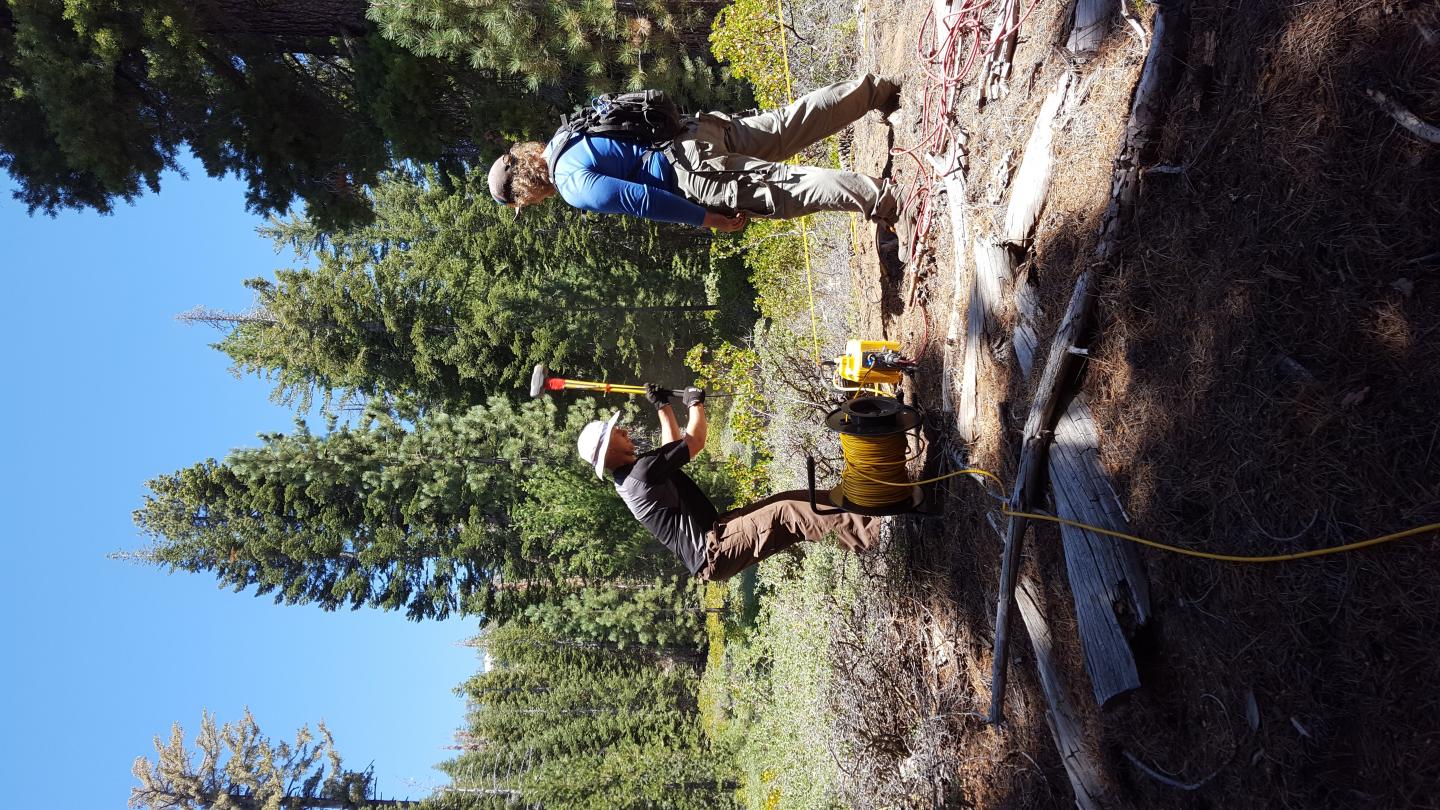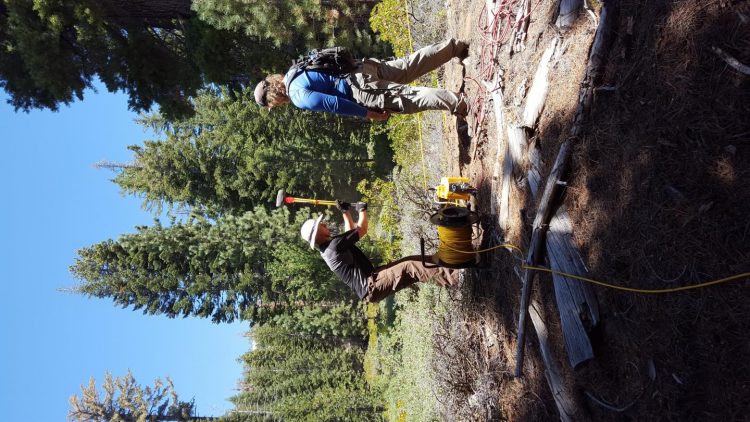Pores, or empty spaces, in rock are critically important for sustaining life on Earth

Credit: R. Callahan
(Carlisle, Pa., Sept. 18, 2019) – New research published today in the journal Science Advances challenges the conventional view of how a vital and life-sustaining feature of weathered rock is created. Porosity, the void space found in rock, was traditionally thought to be formed as water flowed through, chemically dissolving minerals. Now, researchers have found physical weathering, such as tree root wedging or ice cracking, bear a larger responsibility for creating porosity than previously thought. These pores, or empty spaces, are crucial reservoirs for water and life-sustaining nutrients within rocks.
Geophysicist Jorden Hayes, assistant professor of earth sciences at Dickinson College, and a team of researchers from the University of Wyoming, Virginia Tech and the University of California, Davis, conducted geochemical and geophysical analyses of granitic saprolite rock in the southern Sierra Nevada in California. In the field, researchers collected seismic data and gathered core samples of the subsurface material. Both the geophysical and geochemical datasets give independent information about subsurface porosity. The researchers linked these datasets to create subsurface maps that detail the degree of physical weathering in the subsurface.
“The rock there is actually expanding to more than double the initial volume as it weathers,” said Hayes. “This is surprising because we don’t usually think about rock expanding to such a degree, and scientists conventionally think about rock weathering being dominated by chemical dissolution as rainwater flows into the subsurface.”
Hayes’ research found this physical weathering contributes substantially to the overall porosity and thus subsurface water holding capacity, which is vital to sustaining mountain ecosystems, especially during the region’s dry summer seasons and extended droughts. “Our finding is especially exciting as we think about other landscapes that may also be subjected to these physical mechanisms and have the ability to store large volumes of water,” she said.
###
About Dickinson College
Dickinson is a nationally recognized liberal-arts college chartered in 1783 in Carlisle, Pa. The highly selective college is home to 2,400 students from across the nation and around the world. Defining characteristics of a Dickinson education include a focus on global education?at home and abroad?and study of the environment and sustainability, which is integrated into the curriculum and the campus and exemplifies the college’s commitment to providing an education for the common good. http://www.
Media Contact
Craig Layne
[email protected]
Related Journal Article
http://dx.





